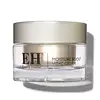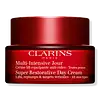What's inside
What's inside
 Key Ingredients
Key Ingredients

 Benefits
Benefits

 Concerns
Concerns

 Ingredients Side-by-side
Ingredients Side-by-side

Water
Skin ConditioningCaprylic/Capric Triglyceride
MaskingPropanediol
SolventCetearyl Alcohol
EmollientNiacinamide
SmoothingPrunus Amygdalus Dulcis Oil
Skin ConditioningGlyceryl Stearate
EmollientAscorbyl Glucoside
AntioxidantCetyl Palmitate
EmollientGlycerin
HumectantParfum
MaskingStearic Acid
CleansingMicrocrystalline Cellulose
AbsorbentButyrospermum Parkii Butter
Skin ConditioningLimonene
PerfumingSodium Levulinate
Skin ConditioningSodium Lauroyl Glutamate
Cetearyl Glucoside
EmulsifyingVitis Vinifera Seed Oil
EmollientSodium Anisate
AntimicrobialSodium Benzoate
MaskingCellulose Gum
Emulsion StabilisingPalmaria Palmata Extract
Skin ProtectingSesamum Indicum Seed Oil
EmollientXanthan Gum
EmulsifyingPhenoxyethanol
PreservativeDisodium EDTA
Oenothera Biennis Oil
EmollientLactobacillus/Pumpkin Fruit Ferment Filtrate
Skin ConditioningLinalool
PerfumingBrassica Campestris Seed Oil
Skin ConditioningBiosaccharide Gum-1
HumectantRosmarinus Officinalis Leaf Extract
AntimicrobialCitral
PerfumingCitronellol
PerfumingLeuconostoc/Radish Root Ferment Filtrate
AntimicrobialBenzyl Benzoate
AntimicrobialGeraniol
PerfumingMaltodextrin
AbsorbentMoringa Oleifera Seed Extract
Skin ConditioningPentapeptide-34 Trifluoroacetate
EmollientWater, Caprylic/Capric Triglyceride, Propanediol, Cetearyl Alcohol, Niacinamide, Prunus Amygdalus Dulcis Oil, Glyceryl Stearate, Ascorbyl Glucoside, Cetyl Palmitate, Glycerin, Parfum, Stearic Acid, Microcrystalline Cellulose, Butyrospermum Parkii Butter, Limonene, Sodium Levulinate, Sodium Lauroyl Glutamate, Cetearyl Glucoside, Vitis Vinifera Seed Oil, Sodium Anisate, Sodium Benzoate, Cellulose Gum, Palmaria Palmata Extract, Sesamum Indicum Seed Oil, Xanthan Gum, Phenoxyethanol, Disodium EDTA, Oenothera Biennis Oil, Lactobacillus/Pumpkin Fruit Ferment Filtrate, Linalool, Brassica Campestris Seed Oil, Biosaccharide Gum-1, Rosmarinus Officinalis Leaf Extract, Citral, Citronellol, Leuconostoc/Radish Root Ferment Filtrate, Benzyl Benzoate, Geraniol, Maltodextrin, Moringa Oleifera Seed Extract, Pentapeptide-34 Trifluoroacetate
Water
Skin ConditioningCaprylic/Capric Triglyceride
MaskingCetearyl Alcohol
EmollientSqualane
EmollientPentylene Glycol
Skin ConditioningGlycerin
HumectantHydrogenated Coco-Glycerides
EmollientAscorbyl Glucoside
AntioxidantButyrospermum Parkii Butter
Skin ConditioningGlyceryl Stearate
EmollientPEG-100 Stearate
Cetearyl Glucoside
EmulsifyingDimethicone
EmollientHydroxyethyl Acrylate/Sodium Acryloyldimethyl Taurate Copolymer
Emulsion StabilisingButylene Glycol
HumectantCarbomer
Emulsion StabilisingCaprylyl Glycol
EmollientSodium Hydroxide
BufferingSucrose Palmitate
EmollientXylitylglucoside
HumectantParfum
MaskingSodium Citrate
BufferingAnhydroxylitol
HumectantTocopheryl Acetate
AntioxidantCI 77891
Cosmetic ColorantSynthetic Fluorphlogopite
Dimethiconol
EmollientXylitol
HumectantGlyceryl Linoleate
EmollientDisodium EDTA
Polysorbate 60
EmulsifyingCitric Acid
BufferingSodium Lactate
BufferingSorbitan Isostearate
EmulsifyingGlucose
HumectantHarungana Madagascariensis Extract
Skin ConditioningMarrubium Vulgare Extract
Skin ConditioningPotassium Sorbate
PreservativePropanediol
SolventCoco-Glucoside
CleansingPectin
Emulsion StabilisingSodium Hyaluronate
HumectantBalanites Roxburghii Seed Oil
Skin ConditioningGuar Hydroxypropyltrimonium Chloride
Skin ConditioningPhenethyl Alcohol
MaskingFurcellaria Lumbricalis Extract
Skin ConditioningPancratium Maritimum Extract
BleachingUlex Europaeus Leaf/Root/Stem Extract
Skin ConditioningPalmitoyl Tripeptide-1
Skin ConditioningLapsana Communis Flower/Leaf/Stem Extract
Skin ConditioningMaris Sal
Skin ConditioningCI 14700
Cosmetic ColorantPalmitoyl Tetrapeptide-7
Skin ConditioningWater, Caprylic/Capric Triglyceride, Cetearyl Alcohol, Squalane, Pentylene Glycol, Glycerin, Hydrogenated Coco-Glycerides, Ascorbyl Glucoside, Butyrospermum Parkii Butter, Glyceryl Stearate, PEG-100 Stearate, Cetearyl Glucoside, Dimethicone, Hydroxyethyl Acrylate/Sodium Acryloyldimethyl Taurate Copolymer, Butylene Glycol, Carbomer, Caprylyl Glycol, Sodium Hydroxide, Sucrose Palmitate, Xylitylglucoside, Parfum, Sodium Citrate, Anhydroxylitol, Tocopheryl Acetate, CI 77891, Synthetic Fluorphlogopite, Dimethiconol, Xylitol, Glyceryl Linoleate, Disodium EDTA, Polysorbate 60, Citric Acid, Sodium Lactate, Sorbitan Isostearate, Glucose, Harungana Madagascariensis Extract, Marrubium Vulgare Extract, Potassium Sorbate, Propanediol, Coco-Glucoside, Pectin, Sodium Hyaluronate, Balanites Roxburghii Seed Oil, Guar Hydroxypropyltrimonium Chloride, Phenethyl Alcohol, Furcellaria Lumbricalis Extract, Pancratium Maritimum Extract, Ulex Europaeus Leaf/Root/Stem Extract, Palmitoyl Tripeptide-1, Lapsana Communis Flower/Leaf/Stem Extract, Maris Sal, CI 14700, Palmitoyl Tetrapeptide-7
Ingredients Explained
These ingredients are found in both products.
Ingredients higher up in an ingredient list are typically present in a larger amount.
Ascorbyl Glucoside is a stable form of Vitamin C. It is created by combining glucose from starch.
When applied to skin, Ascorbyl Glucoside turns into Ascorbic Acid.
Ascorbyl Glucoside is an antioxidant. Antioxidants help fight free-radicals, or molecules that may damage skin cells.
It can help to reduce redness, improve skin texture, reduce the effects of aging, reduce the visibility of dark spots, and brighten skin.
Read more about other types of Vitamin C:
Learn more about Ascorbyl GlucosideThis ingredient is also known as shea butter. It is an effective skin hydrator and emollient.
Emollients help soothe and soften your skin. It does this by creating a protective film on your skin. This barrier helps trap moisture and keeps your skin hydrated. Emollients may be effective at treating dry or itchy skin.
Shea butter is rich in antioxidants. Antioxidants help fight free-radicals, or molecules that may harm the body. It is also full of fatty acids including stearic acid and linoleic acid. These acids help replenish the skin and keep skin moisturized.
While Shea Butter has an SPF rating of about 3-4, it is not a sunscreen replacement.
Shea butter may not be fungal acne safe. We recommend speaking with a professional if you have any concerns.
Learn more about Butyrospermum Parkii ButterThis ingredient is an emollient, solvent, and texture enhancer. It is considered a skin-softener by helping the skin prevent moisture loss.
It helps thicken a product's formula and makes it easier to spread by dissolving clumping compounds.
Caprylic Triglyceride is made by combining glycerin with coconut oil, forming a clear liquid.
While there is an assumption Caprylic Triglyceride can clog pores due to it being derived from coconut oil, there is no research supporting this.
Learn more about Caprylic/Capric TriglycerideCetearyl alcohol is a mixture of two fatty alcohols: cetyl alcohol and stearyl alcohol. It is mainly used as an emulsifier. Emulsifiers help prevent the separation of oils and products. Due to its composition, it can also be used to thicken a product or help create foam.
Cetearyl alcohol is an emollient. Emollients help soothe and hydrate the skin by trapping moisture.
Studies show Cetearyl alcohol is non-toxic and non-irritating. The FDA allows products labeled "alcohol-free" to have fatty alcohols.
This ingredient is usually derived from plant oils such as palm, vegetable, or coconut oils. There is debate on whether this ingredient will cause acne.
Due to the fatty acid base, this ingredient may not be Malassezia folliculitis safe.
Learn more about Cetearyl AlcoholCetearyl Glucoside is a surfactant and emulsifier. It can be produced from synthetic of natural sources of cetearyl alcohol and glucose.
Emulsifiers help prevent ingredients from separating, such as oils and waters. It can also be used to enhance the texture of products.
As a surfactant, Cetearyl Glucoside helps during the cleansing process. By gathering all the dirt and oils, it allows these molecules to be washed away easily.
Learn more about Cetearyl GlucosideDisodium EDTA plays a role in making products more stable by aiding other preservatives.
It is a chelating agent, meaning it neutralizes metal ions that may be found in a product.
Disodium EDTA is a salt of edetic acid and is found to be safe in cosmetic ingredients.
Learn more about Disodium EDTAGlycerin is already naturally found in your skin. It helps moisturize and protect your skin.
A study from 2016 found glycerin to be more effective as a humectant than AHAs and hyaluronic acid.
As a humectant, it helps the skin stay hydrated by pulling moisture to your skin. The low molecular weight of glycerin allows it to pull moisture into the deeper layers of your skin.
Hydrated skin improves your skin barrier; Your skin barrier helps protect against irritants and bacteria.
Glycerin has also been found to have antimicrobial and antiviral properties. Due to these properties, glycerin is often used in wound and burn treatments.
In cosmetics, glycerin is usually derived from plants such as soybean or palm. However, it can also be sourced from animals, such as tallow or animal fat.
This ingredient is organic, colorless, odorless, and non-toxic.
Glycerin is the name for this ingredient in American English. British English uses Glycerol/Glycerine.
Learn more about GlycerinGlyceryl Stearate is a mix of glycerin and stearic acid.
It is used to stabilize the mixing of water and oil ingredients. By preventing these ingredients from separating, it can help elongate shelf life. It can also help thicken the product's texture.
As an emollient, it helps soften skin and supports barrier-replenishing ingredients.
In cosmetics, Glyceryl Stearate is often made from vegetable oils or synthetically produced.
This ingredient may not be fungal-acne safe
Fun fact: The human body also creates Glyceryl Stearate naturally.
Learn more about Glyceryl StearateParfum is a catch-all term for an ingredient or more that is used to give a scent to products.
Also called "fragrance", this ingredient can be a blend of hundreds of chemicals or plant oils. This means every product with "fragrance" or "parfum" in the ingredients list is a different mixture.
For instance, Habanolide is a proprietary trade name for a specific aroma chemical. When used as a fragrance ingredient in cosmetics, most aroma chemicals fall under the broad labeling category of “FRAGRANCE” or “PARFUM” according to EU and US regulations.
The term 'parfum' or 'fragrance' is not regulated in many countries. In many cases, it is up to the brand to define this term.
For instance, many brands choose to label themselves as "fragrance-free" because they are not using synthetic fragrances. However, their products may still contain ingredients such as essential oils that are considered a fragrance by INCI standards.
One example is Calendula flower extract. Calendula is an essential oil that still imparts a scent or 'fragrance'.
Depending on the blend, the ingredients in the mixture can cause allergies and sensitivities on the skin. Some ingredients that are known EU allergens include linalool and citronellol.
Parfum can also be used to mask or cover an unpleasant scent.
The bottom line is: not all fragrances/parfum/ingredients are created equally. If you are worried about fragrances, we recommend taking a closer look at an ingredient. And of course, we always recommend speaking with a professional.
Learn more about ParfumPropanediol is an all-star ingredient. It softens, hydrates, and smooths the skin.
It’s often used to:
Propanediol is not likely to cause sensitivity and considered safe to use. It is derived from corn or petroleum with a clear color and no scent.
Learn more about PropanediolWater. It's the most common cosmetic ingredient of all. You'll usually see it at the top of ingredient lists, meaning that it makes up the largest part of the product.
So why is it so popular? Water most often acts as a solvent - this means that it helps dissolve other ingredients into the formulation.
You'll also recognize water as that liquid we all need to stay alive. If you see this, drink a glass of water. Stay hydrated!
Learn more about Water